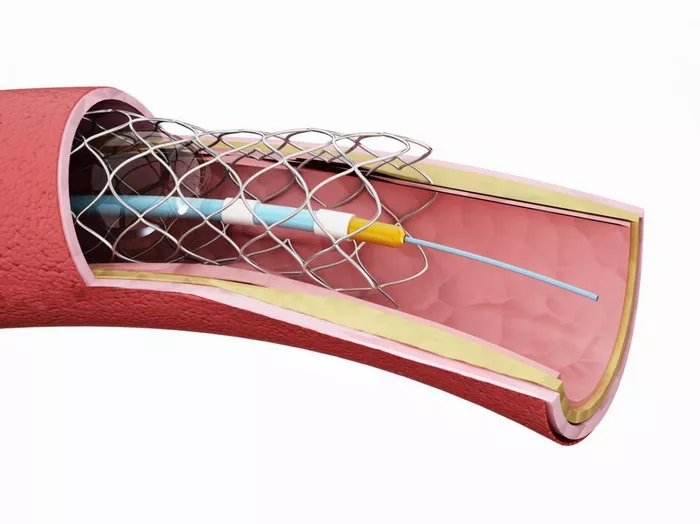Stents are commonly used in medical procedures to open blocked or narrowed arteries. While they are effective in restoring blood flow to the heart and other vital organs, there are instances where stents can fail or become ineffective over time. Understanding the symptoms of stent failure is crucial for patients who have undergone stent placement to ensure timely intervention and appropriate medical care. In this article, we will explore the various symptoms that may indicate stent failure, the potential causes behind it, and the importance of monitoring for these signs.
1. Chest Pain or Discomfort
One of the primary symptoms of stent failure is chest pain or discomfort. This pain may feel similar to the angina experienced before the stent was placed, characterized by a tightness, pressure, or squeezing sensation in the chest. It can occur during physical activity or at rest and may radiate to the arms, back, neck, or jaw. Patients should not ignore new or worsening chest pain after stent placement, as it could signify a problem with the stent or the artery.
2. Shortness of Breath
Stent failure can also lead to shortness of breath, especially during exertion. This symptom may indicate that the stent is not adequately supporting blood flow, causing the heart to work harder to meet the body’s oxygen demands. Patients may notice difficulty breathing during activities that were previously manageable, such as climbing stairs or walking short distances.
3. Fatigue and Weakness
When a stent fails, it can affect the overall efficiency of blood circulation, leading to fatigue and weakness. Patients may feel unusually tired, even with minimal physical activity. This symptom can impact daily tasks and quality of life, highlighting the importance of addressing stent failure promptly to restore optimal blood flow and energy levels.
4. Irregular Heartbeat (Arrhythmia)
Stent failure may contribute to the development of irregular heart rhythms or arrhythmias. Patients may experience palpitations, a sensation of rapid or fluttering heartbeats, or episodes of dizziness or lightheadedness. Arrhythmias can be serious and should be evaluated by a healthcare provider to determine the underlying cause, which could include stent-related issues.
5. Recurrence of Symptoms
Another indicator of stent failure is the recurrence of symptoms that initially prompted the need for stent placement. For example, if a patient underwent stent insertion due to angina or heart attack symptoms and these symptoms return despite appropriate medical management, it could signal stent dysfunction or restenosis (re-narrowing of the artery).
6. Swelling or Discoloration of the Limbs
In some cases, stent failure in peripheral arteries (arteries outside the heart) can lead to symptoms such as swelling, numbness, or discoloration of the affected limb. This may occur if the stent becomes blocked or if there are complications with blood flow in the treated artery.
7. Increased Blood Pressure
Stent failure can also result in increased blood pressure, especially if the stent was placed in a coronary artery or a vessel supplying blood to vital organs. Patients with uncontrolled hypertension or sudden spikes in blood pressure should seek medical attention to rule out stent-related issues.
8. Fluid Retention (Edema)
Edema, or fluid retention, can occur as a result of stent failure, particularly if it affects the heart’s ability to pump blood effectively. Patients may notice swelling in the ankles, legs, or abdomen, along with weight gain and a feeling of bloating or fullness. Monitoring for changes in fluid status is essential in evaluating stent function and overall cardiovascular health.
Causes of Stent Failure
Stent failure can be caused by various factors, including:
1. Restenosis: This occurs when the treated artery becomes narrowed again due to scar tissue formation or plaque buildup within the stent.
2. Stent Thrombosis: In rare cases, blood clots can form inside the stent, leading to sudden blockage of blood flow and stent failure.
3. Stent Migration: The stent may move from its original position, affecting its ability to keep the artery open.
4. Stent Fracture: In some instances, stents can fracture or break, compromising their function and requiring intervention.
5. In-Stent Restenosis: This refers to the recurrence of narrowing within the stent itself, often due to tissue growth or inflammation.
Importance of Monitoring and Follow-Up Care
Regular follow-up appointments with healthcare providers are crucial for patients with stents to monitor their condition and detect any signs of stent failure early on. Diagnostic tests such as angiograms, stress tests, and imaging studies may be recommended to assess stent function and overall cardiovascular health.
Conclusion
Recognizing the symptoms of stent failure is vital for patients who have undergone stent placement. Chest pain or discomfort, shortness of breath, fatigue, irregular heartbeats, recurrence of symptoms, limb swelling, increased blood pressure, and fluid retention are key indicators that warrant medical evaluation. By understanding these symptoms and seeking timely medical care, patients can ensure optimal outcomes and effectively manage stent-related issues.


